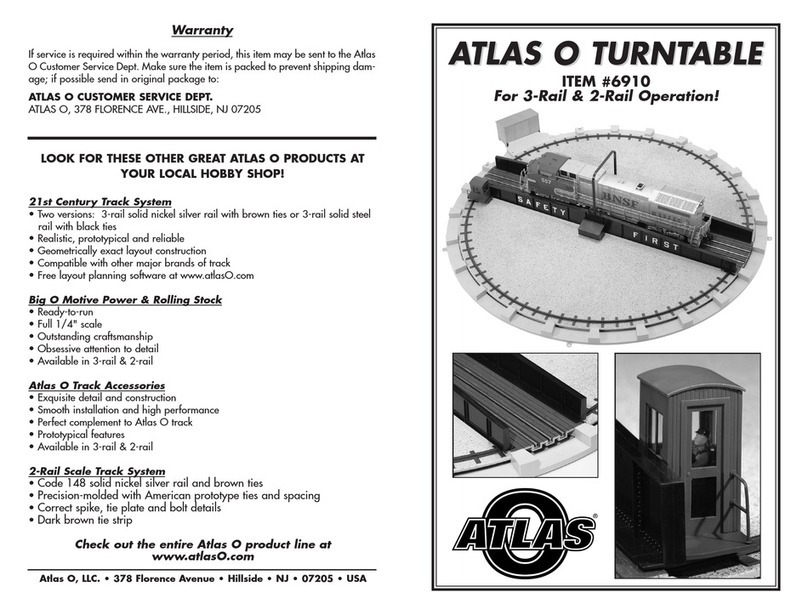
10
With Railsounds, you experience the sounds
of real railroading like never before.
Simply put, it’s the most sophisticated, authentic
model railroad sound system in the world.
• Four diesel-roar levels. Your loco’s speed
determines the level of diesel RPM roar—au-
tomatically, if you prefer: idle, half throttle,
three quarters or full-speed output.
• MultiHorn™. A different horn sound
at different speeds—a Railsounds
exclusive.
• Mechanical bell. Press BELL on your trans-
former to begin the effect, again to discontinue.
• Reverse unit reset sound. Power down
your track, wait for 3-5 seconds, and listen for
the air-release sound—that’s the loco telling
you its Lionel Command reverse unit has just
reset to forward operation.
• Shutdown sequence. No other model rail-
road sound system shuts down like Railsounds.
Turn off track power, and after the air-release
reset sound, you have two seconds to restart
your loco. If you’re done with operations,
Railsounds will commence with a realistic
diesel shutdown sequence about two seconds
after the air-release reset occurs.
• For even more authentic Railsounds
effects, operate in the TrainMaster Command
environment.
Experiencing the range of your locomotive’s Railsounds system
Notes on Railsounds
• Turn the volume knob clockwise or counter
clockwise in the location shown on page 6 to
adjust sound output.
• Listen for incidental locomotive sounds during
Railsounds operation. They’re automatic
and, of course, authentic.
• The 9-volt alkaline battery you installed
ensures continuous loco diesel roar in conven-
tional operation.
• Longer track-power interruptions (including
locomotive derailments) cause Railsounds to
shut down after about 7 seconds.
Transformer (Non-Command Operations)




























